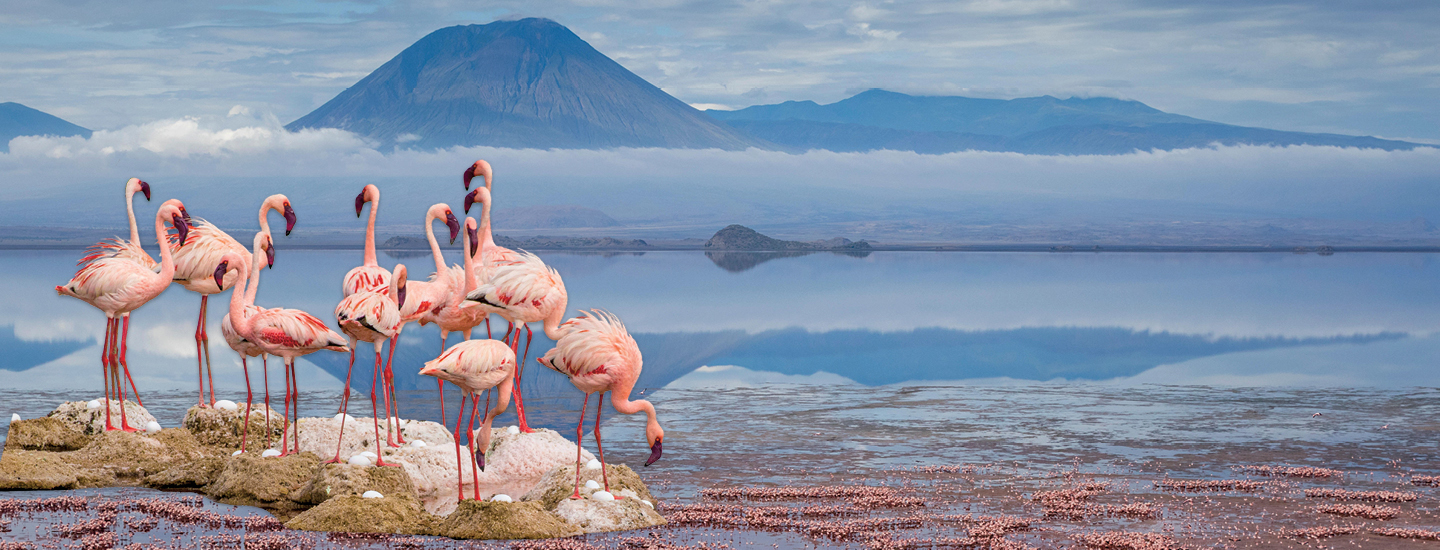Jim McMahon/Mapman ®
In the African country of Tanzania, there’s a beautiful lake. It’s called Lake Natron. A towering volcano rises near its shores. The shallow water looks just right for wading.
But if you visit Lake Natron, don’t bring your swimsuit. A quick dip can strip skin from your body. Don’t drink the water either. It could send you to the hospital.
It would be smart to admire the lake from a distance—unless you’re a lesser flamingo. Then you’d be able to enjoy Lake Natron. You’d probably visit with about 2 million friends. And you and your friends would raise hundreds of thousands of baby flamingos on its shores.
In the African country of Tanzania, there’s a beautiful lake called Lake Natron. Its water looks perfect for wading.
But if you visit, don’t bring your swimsuit. A quick dip can strip skin from your body. Don’t drink the water either. It could send you to the hospital.
You should admire the lake from a distance—unless you’re a lesser flamingo. Then you could enjoy Lake Natron. You’d probably visit with about 2 million friends. You and your friends would raise hundreds of thousands of baby flamingos on its shores.
In the African country of Tanzania, there’s a beautiful lake called Lake Natron with a towering volcano near its shores. The lake’s shallow water looks perfect for wading.
But if you visit Lake Natron, don’t bring your swimsuit. A quick dip can strip skin from your body. Don’t drink the water either, unless you want to spend some time in the hospital.
It would be smart to admire the lake from a distance—unless you’re a lesser flamingo. Then you’d be able to enjoy Lake Natron. You’d probably visit with about 2 million friends. And you and your friends would raise hundreds of thousands of baby flamingos on its shores.

